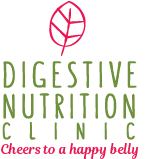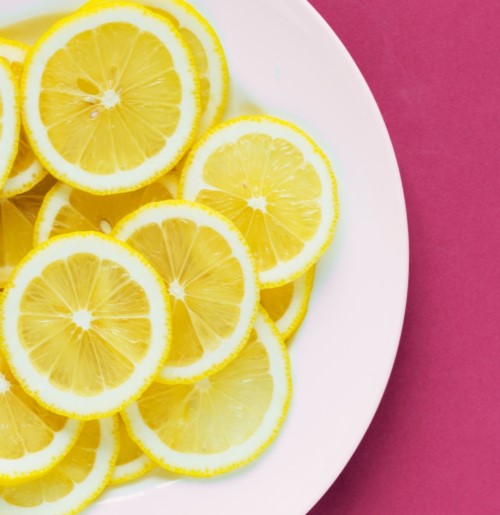Food additives are detergent-like chemicals that are added to many processed foods. Emulsifiers are added for the following reasons: to improve food appearance, texture and mouthfeel; to enhance flavor or to add flavor to low-fat foods; and to keep the quality and stability of food or to preserve it. Examples of food additives are preservatives, coloring agents, flavor enhancers, humectants, antifoaming agents, bulking agents, sweeteners and more. Foods that commonly contain emulsifiers are gluten-free and low-fat products, ice cream wine and pickles. These chemicals are approved as safe, but strict regulations exist to control the amount found in foods.
As part of our efforts to promote digestive health and nutrition, our team has developed a unique Clean Low FODMAP Diet (with a Mediterranean twist), which incorporates a great variety of foods to your daily diet and helps you maximize your fiber intake.
This diet relies on whole grains and natural sugars and minimizes the consumption of over-processed foods that contain preservatives and additives. Our recipes use plenty of olive oil, vegetables, legumes (as much as is allowed by Monash FODMAPs), olives, fruits, whole grains and lean protein sources. We also try to choose foods that are free of chemical flavorings, artificial colors, antibiotics and pesticides, and minimize your daily salt intake.
As defined by the Monterey Bay Aquarium Seafood Watch, sustainable seafood is “shellfish and fish caught or farmed in environmentally responsible ways.”
Melissa here to dive deep into mindful eating! I currently have my own private health coaching practice where I help people find the food and lifestyle habits that work for their unique body, so that they can be happy, healthy, confident, and no longer feel restricted or deprived.
Claire Bramham is a Clinical Hypnotherapist and Neuro Linguistic Programming (N.L.P) Master with an Honours Degree in Psychology. Her passion in life has been to find out how the mind works, so she can empower her clients to heal their body with their minds. She helps her clients overcome self-limiting beliefs, subconscious fears or blocks, and in the process build up their self-esteem and self-worth.
Legumes including all kinds of beans and peas can be really problematic for people with a sensitive gut. On the other hand, the health benefits of legumes are well documented. Legumes are low in fat, have a low GI index, are high in fiber and contain a variety of phytochemicals.
Intake of prebiotic foods promotes the growth of beneficial bacteria in the gut. Based on the consensus of the International Scientific Association for Probiotics and Prebiotics (ISAPP), prebiotics are “a substrate that is selectively utilized by host microorganisms conferring a health benefit”.
Based on the World Health Organization (WHO), colorectal cancer is the second most frequently occurring cancer and the third leading cause of cancer-related deaths in the world. According to WHO, an estimated 1.8 million new cases of colorectal cancer are predicted for 2018, and 862 thousand deaths are expected as a result. The overall lifetime risk of developing colorectal cancer is slightly higher in men than in women, with about 4.49% risk in men and 4.15% in women.
Since we started our work as the Digestive Nutrition Clinic, one of the health professionals whom we’ve admired from afar—finding her work and approach both insightful and highly useful—is Andrea Hardy, RD, a registered dietitian and Canada’s gut health expert.
Many people with GI problems get anxious with the prospect of going out to restaurants and rightly so, as high FODMAP offenders are very commonly found in restaurant menus. Going out with family or friends should be an enjoyable and stress-free time for all. As part of our Happy Belly Tips Series, we will provide our top tips for visiting restaurants and enjoying a meal.
Eggs are not a source of FODMAPs and we enjoy both eating them and using them in our recipes. A large egg provides 6 grams of high quality protein and 50% of our daily needs of B12. Eggs provide 13 important nutrients such as vitamin A, D, E, Folate, Iron, Zinc, choline, lutein and zeaxanthin (antioxidants). But all the terminology surrounding eggs nowadays can be very confusing.
We all grow up hearing, “Don’t touch that, it’s dirty,” or “Go wash your hands, you’ll get sick,” and we fear bacteria like they are our worst enemy.
Not all bacterial are created equal, however.
We live on the other side of the pond, a region where FODMAPs and the low FODMAP product industry are just starting to get noticed. However, everybody recognizes the need for low FODMAP products in order to cater to the 10 to 20 percent of the population suffering from IBS. In fact, recent reports have been projecting the FODMAP market to explode in the next ten years.
Everyone in the world of FODMAPs and IBS knows Patsy Catsos. Back in 2009, she published IBS: Free at Last! Change Your Carbs, Change Your Life with the FODMAP Elimination Diet, one of the first books on IBS and a step-by-step introduction to FODMAPs. Patsy continued her publishing career with the release of Flavor without FODMAPs Cookbook: Love the Foods that Love You Back in 2014, IBS-Free Recipes for the Whole Family (The Flavor without FODMAPs Series Book 2) in 2015, and The IBS Elimination Diet and Cookbook: The Proven Low-FODMAP Plan for Eating Well and Feeling Great in 2017.
If you take a look at the recipes on our website, you will see that they are labelled with a sticker for either Phase 1 or Phase 2 diet.
Cooking low FODMAP food at home is not as daunting as it may sound. It takes a little bit of planning ahead for grocery shopping and some knowledge on how to swap high FODMAP with low FODMAP ingredients without compromising on flavor. Here are our 10 recommended steps to make your cooking low FODMAP.
As an IBS sufferer, traveling either on holidays or for work is no easy matter. Long hours on planes or in cars, erratic eating in restaurants, and overindulging in local foods and drinks often result in an exacerbation of my symptoms. You grow to expect all of this and prepare yourself for it, even though it shouldn’t be this way. With a few changes in one’s personal habits, however, following a low FODMAP diet while traveling is not as difficult as you’d think.
A short and sweet blog post this time around. Here are twenty tips to reduce your bloating and keep your belly happy.
All the symptoms shown below and more are repeatedly experienced by patients suffering either from irritable bowel syndrome with constipation (IBS-C) or functional chronic constipation (CC). These have also been confirmed by a number of studies, many of which also show a decrease in quality of life of IBS-C sufferers, even more so than in patients with IBS-diarrhea (IBS-D).
We love healthy, unprocessed food made with fresh ingredients and prepared in a pure manner. We like to use ingredients with the greatest nutritional value and aim to eat a balanced diet, heavy on plant-based foods. We try as much as possible to source locally and use ingredients that are in season. Additionally, our passion for good food is reflected in the kitchen, where we enjoy cooking and have great fun while doing it.
Page 1 of 2






















